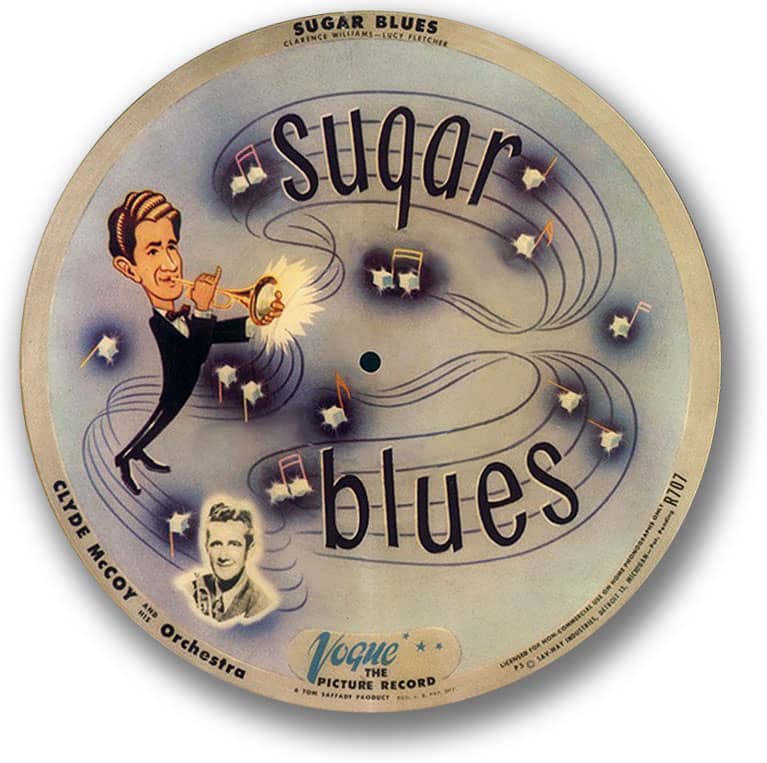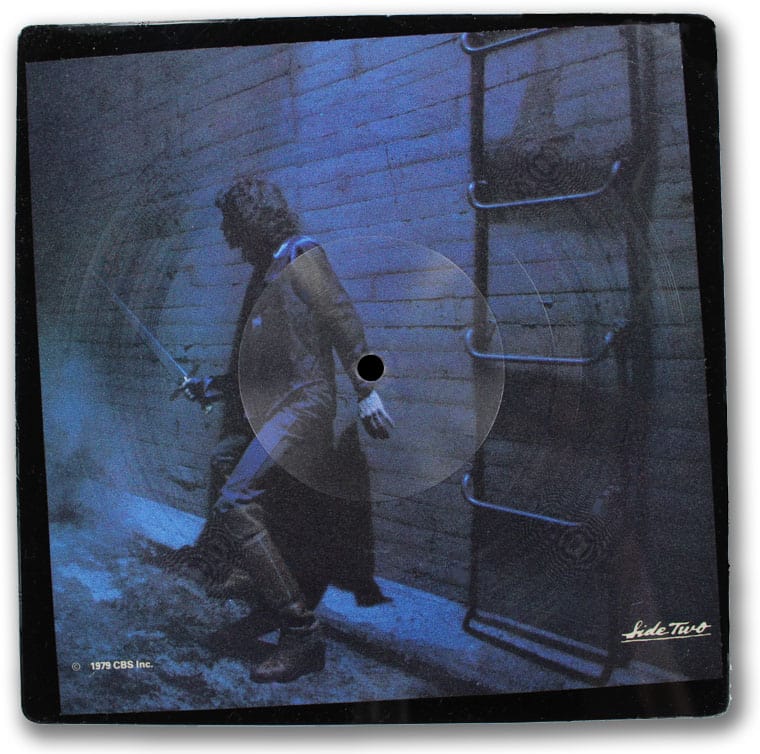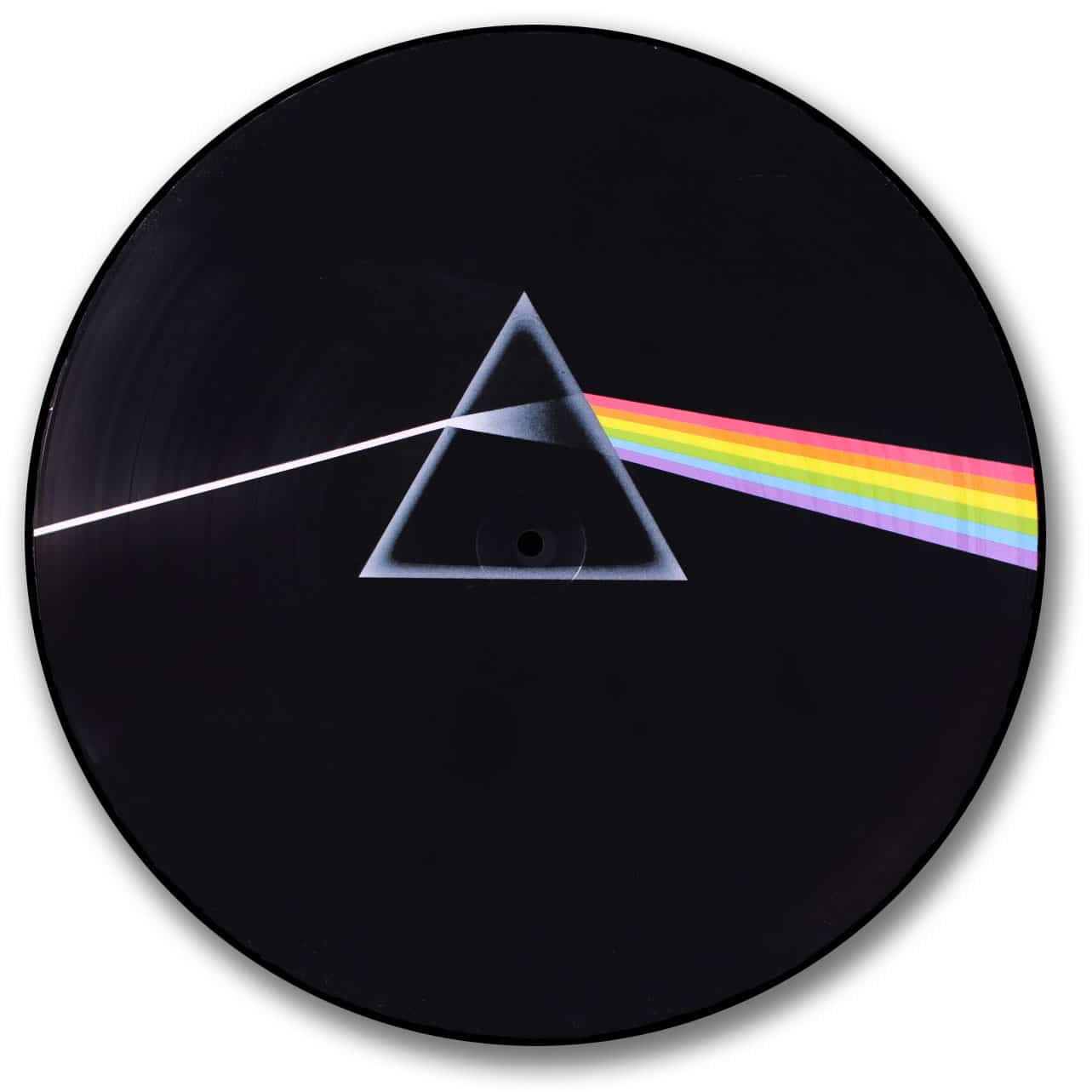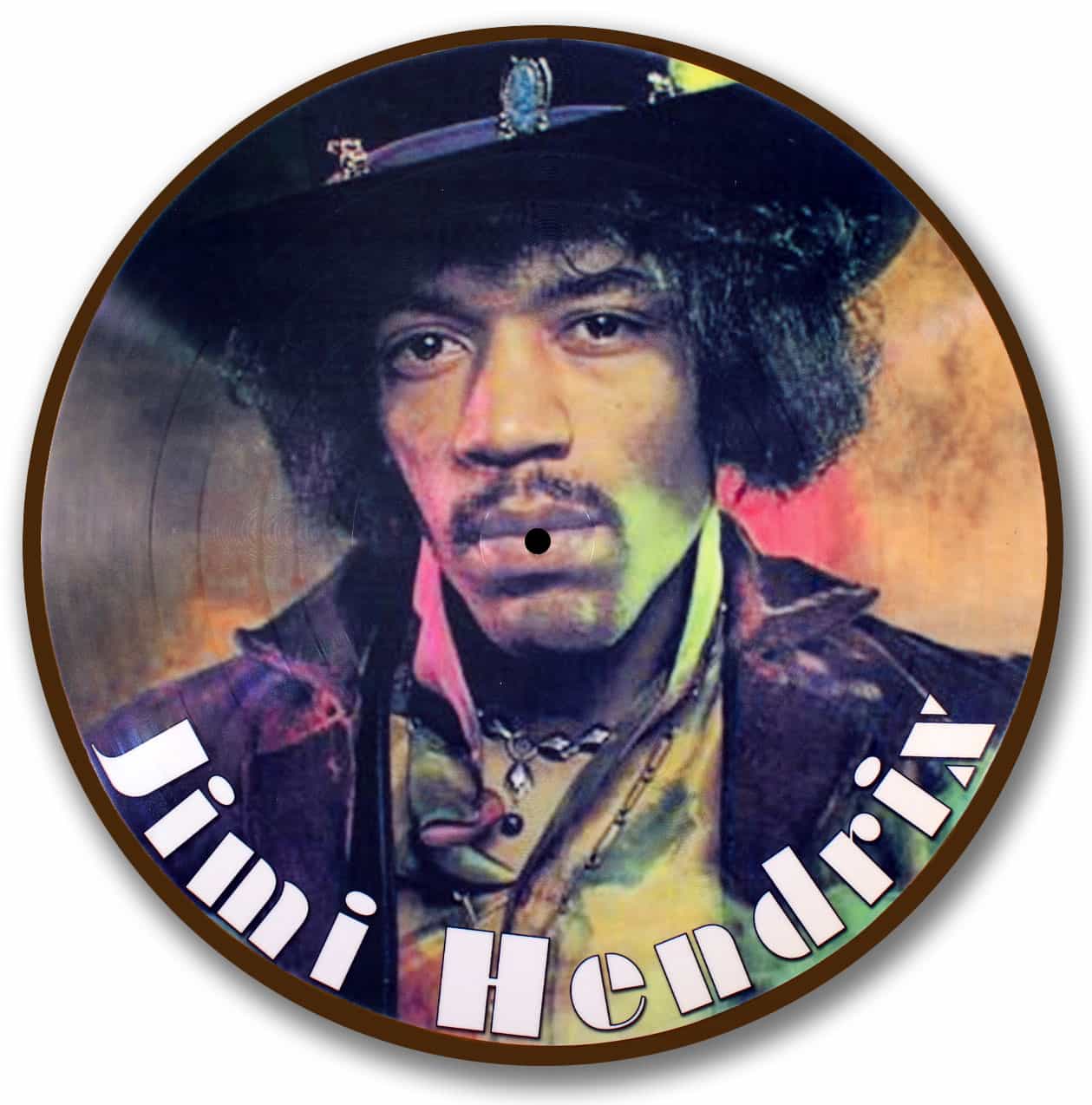From this collector’s point of view, one of the more fascinating areas of recorded music is that of picture discs.
The most simplistic definition of a picture disc is the incorporation of graphics and music onto a round or shaped disc. A more complete description of a picture disc record (modern day) or commonly referred to as a pic-disc, is a record containing a base layer of PVC (poly vinyl chloride), surrounded on both sides with a photographic layer, and finished up with a clear layer of PVC, again on both sides of the disc.As the five layers are combined, a continuous groove of music is pressed into the playing surface. Any excess vinyl is then trimmed from the surrounding area giving the recording a clean edge and thereby completing the disc.
Although pleasing to the eye, the overall sound quality of these recordings are not comparable to the better sounding black vinyl discs. This is due in part to ultra thin outside layers of clear vinyl which supports the grooves.
The origin of the picture disc or record dates back to the early 1920s. One of the first companies to develop these discs was the Musika Postkarte Co. of Germany. Other companies involved with this process were Trusound of Great Britain, Sav-Way Industries and the RCA Victor Corporation, both of the U.S.

Vogue discs were made of vinyl over aluminum.
Often the use of various materials was employed in the manufacture of these records. This included cardboard, shellac, plastic, wax, and aluminum. One of the most renowned manufacturers using aluminum in their process was Sav-Way Industries of Detroit Michigan. They sold their recordings under the Vogue” name and produced the Vogue disc from May of 1946 until April of 1947 with a catalog of approximately 74 picture discs. As the Second World War ended, vinyl eventually came into play. But it wasn’t until the l960s that vinyl became the primary material in the manufacture of all records.
Up to this time, picture discs were generally available commercially. Though, with the post 1970s, production became more of a promotional process. They were primarily used by the record labels to “hype” the music of various artists or groups, and eventually distributed to radio stations and record stores as incentives or gifts. Promotional copies were generally pressed in extremely small quantities, and sometimes as little as 100 copies of a disc were released to a worldwide market. Because of their limited nature and unique appearences, “promos” are highly sought after by collectors and fans alike.

Starting in the late 1970s, a push by several recording companies including Capitol, Epic, and Columbia Records, was made to bring picture discs onto the commercial market in vast numbers. Groups such as “The Beatles”, “Pink Floyd”, “Meat Loaf” and “The Steve Miller Band” soon found their way to the shelves of the domestic and European markets.

As the 1980s came about, commercial production of picture discs was in full swing, although production eventually switched from domestic presses to the British and European plants. Towards the latter half of the 1980s, interest in picture discs began to diminish.
With the arrival of the 90s and the demise of vinyl records, the production of picture discs was again used somewhat promotionally or limited to small batches. Also during this time, the market witnessed a huge increase in unauthorized or “bootleg” pressings. The bulk of these discs appear to have originated from the European and Asian plants.

the U.K.
As we enter the 21st century, the future is bright for the picture disc market. With sites such as Ebay, Yahoo, and hundreds of online record dealers, the average collector need not go any further than his or her computer, to acquire a piece of “album art” that they will forever cherish.
Jeff Bender – 2000
About the Author
Jeff Bender has been an avid collector of vinyl recordings for over 40 years. His interest started while employed as a manager for several retail record chains located in the state of Maryland. He further enhanced his knowledge while hosting a “Rock and Roll” show(also called the Vinyl Underground) for WGTB-FM out of Washington, D.C. As a hobby, he is currently the Webmaster for several music related websites which includes the Vinyl Underground.
Jeff and his camera. Each picture disc is photographed, then PhotoShopped in order to get the perfect look(in most cases) for all to enjoy.

